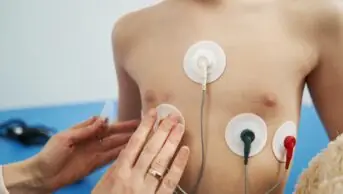
Shutterstock.com
Variability in hospital clinical pharmacy provision could inhibit critical decision making when it comes to medicines use in children, an investigation carried out by the Healthcare Safety Investigation Branch (HSIB) has concluded.
In a report, published on 3 February 2022, the HSIB said that the investigation into a safety incident involving a child had highlighted variability in hospital clinical pharmacy provision that reduced the availability of ward-based pharmacists and could result in a dispensary-based service only at weekends.
The investigation, launched on 18 January 2021, was triggered after the HSIB, which conducts independent investigations of patient safety concerns in NHS-funded care across England, was notified of an incident involving a child aged four years, who, after being diagnosed with a blood clot in her leg following a surgical procedure, received ten times the intended dose of the anticoagulant dalteparin on five separate occasions, over one weekend.
This, the HSIB said, was owing to errors that occurred during the prescription, dispensing and administration processes.
The errors resulted in the child, named Felicity, being admitted to the paediatric intensive care unit, with evidence of a bleed in her brain, where she stayed for three months until she was discharged with an ongoing care plan.
The HSIB report said the “lack” of a seven-day clinical pharmacy service meant that the specialist pharmacists were not present on the cardiology ward over that weekend.
“A higher level of pharmacy service would have afforded a daily review of Felicity’s medication chart and pharmacist presence on the ward, both of which would have provided an opportunity to verify the dose of dalteparin,” it added.
The investigation heard that the role of pharmacy staff was considered to be “invaluable” by the medical and nursing staff, but that pharmacy staff were “rarely” present during ward rounds or in huddles, in part owing to the fact that the huddles did not take place at set times and often conflicted with other commitments.
The report added that, in the case of the reference event, the pharmacy team “did not appear” to be completely integrated into the multidisciplinary team and “were not integral” to the discussions about the initiation of anticoagulant therapy.
“The investigation heard that the irregular ward round attendance by the nursing and pharmacy teams was resource and capacity related, in addition to the timing of the round, which took place when other tasks needed to be undertaken.”
In September 2016, NHS England published its report ‘Transformation of seven day clinical pharmacy services in acute hospitals‘, which linked the limited availability of patient-facing hospital pharmacy services outside of “normal hours” to patients missing doses of important medicines and low levels of medicines reconciliation.
However, the most recent NHS data, published in 2019, show that — despite some increases in the availability of pharmacy services during the week in England — there are still gaps, particularly at weekends, with Saturday staffing at 19.8% of weekday staffing and Sunday staffing at 15.8%.
Sara Watkinson, a highly specialist electronic prescribing and medicines administration (ePMA) pharmacist at Guy’s and St Thomas’ NHS Foundation Trust, said she agreed that there was “great variability” of the provision of pharmacy weekend services across trusts, ranging from dispensary-based, remote clinical pharmacy services and ward-based cover.
“There may even be variability in the knowledge and skillset between weekend teams in a single department,” she added.
“The occurrence of medication errors does not stop over weekends, and the visibility and accessibility of a pharmacy team may allow for more effective communication between clinicians, nursing or midwifery colleagues regarding medicines, and thus medication safety in hospitals.
“I think pharmacists and pharmacy technicians should provide a ward-based service, irrespective of the day of the week.”
Speaking in a personal capacity, Daniel Hawcutt, practising consultant paediatric clinical pharmacologist, described the report as “timely and important”.
“Sadly, dosing errors, and in particular 10-fold dosing errors, are not limited to this one patient. We know from work in Wales that the frequency of 10-fold over- or underdoses may be up to 1 in 4,000 paediatric admissions,” he said.
“This does not mean that all these incorrect prescriptions are given to the patients — as many are identified by existing systems — nor that harm occurs, but it highlights the importance.”
Hawcutt said it would be “interesting” to see how the HSIB’s safety recommendations were acted upon, and then translated across paediatrics nationally.
“Paediatric units in hospitals come in various sizes, from single wards in district general hospitals to large tertiary/quaternary hospitals with hundreds of beds. With variation in size also comes variation in the availability of specialist services like paediatric pharmacists, or clinicians with expertise in e-prescribing for children and/or paediatric pharmacology.
“While for most centres, prescribing for children will remain a small minority of the total prescribing undertaken, this HSIB report makes clear that the needs of this population need to be fully considered, and their safety guarded as much as possible.”
Another significant finding by the HSIB was that some ePMA systems may not currently be registered as medical devices in line with the Medical Device Regulations 2002, despite meeting the criteria.
As a result of this finding, the HSIB has issued a recommendation for the Medicines and Healthcare products Regulatory Agency to work with the manufacturers of ePMA systems to provide guidance on their obligations under the regulations, if their systems meet the criteria for a medical device.
“ePrescribing or clinical systems do not replace critical thinking or clinical judgement, and therefore should be considered by all medical and non-medication staff as a medical device, or an ‘aid’ where the definition is not met (under the regulations),” said Watkinson.
“These complex systems are often considered by end-users to make it impossible for a prescribing or administration event to occur, but this is seldom true. It’s quite remarkable what shortcuts end-users can find, or do that causes an error, even when you are the local expert on the system.”
Helen Jones, national investigator at HSIB, said that a study reviewed during the investigation showed that, in paediatrics, 13% of prescriptions written for children contain errors.
“Although we made a number of findings and recommendations, we felt it important to highlight those associated with the regulation and governance of ePMA systems,” she said.
“This is because it is the change that could happen right at the start of the process; working with the manufacturers to ensure that systems are designed to safety principles before they are even out of the door. Along with other recommendations around safety barriers, this will be crucial in reducing errors and ensuring a safe level of medication is administered to all patients.”
Read more: Adverse drug reactions in children and young people


